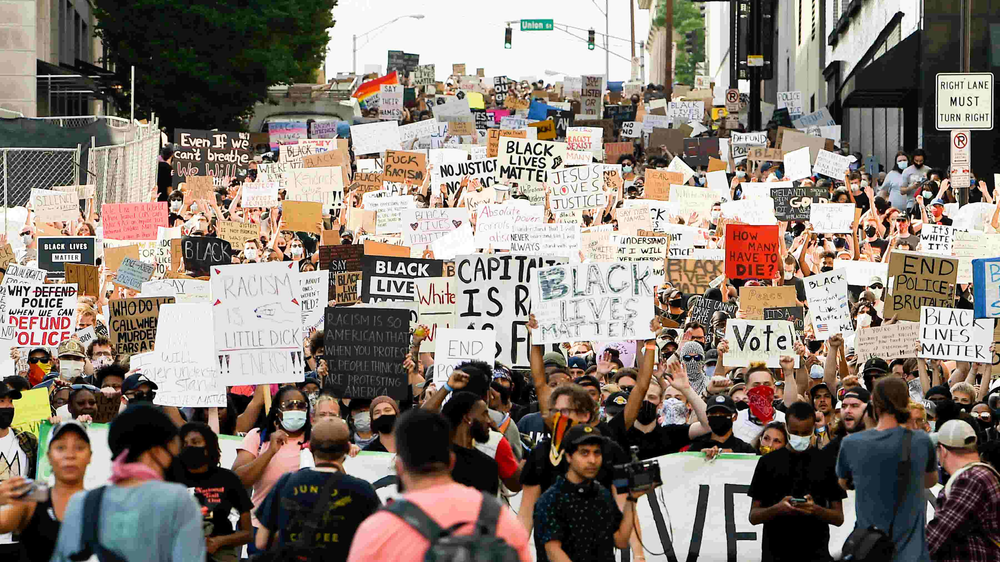
We live in a time marked by the immediate transmission of graphic images across the globe, by the witness we all bear, not as passive readers of newspapers or journals, but as engaged actors in the unfolding of a new society. Are you really surprised to see so many young people at the front of the crowd?
What better reminder of the nature of the young mind than the insistence demonstrated by a young protestor, courageous in their assurance that things not only could be different, but that their contributions will help to make it so. As adults, maybe you’ve learned a little more temperance. Maybe your passions are moderated by your responsibilities. That is to be expected. But don’t pretend that it’s a good thing. It’s not necessarily a good thing.
We know certain things about children: that they are inherently good. That they seek to contribute in meaningful ways to communities around them. That they are peaceful and collaborative. That they are not selfish by nature or violent by nature or disruptive by nature.
Youth protestors are no less good, no less intent on contributing to their communities, no less collaborative. They may be using louder voices (a tool we’ve taught them) or expressing their anger in their bodies (another tool we’ve taught them) but they are doing so because they believe, they still believe, thank god they believe, this can get better.
As teachers and parents of young children, we can learn from the adolescent and young adult protestors we see around us. They are able to communicate (with far greater volume and exceptionally witty signs) their frustration at a society that dehumanizes them, that excludes them from their own agency, that insists on the edification of systems of power and authority to which they are only welcome if they, too, choose to replicate them. They know that their experience is a part of a larger experience and that their voices should be raised against the injustices suffered by their peers, even if they have not personally suffered them. They are empathetic to their society and loyal to its members. This is precisely the experience of the child.
And as teachers and parents of young children, as Montessorians, we seek to protect young children from the heavy-hand of adult society, to trust their spontaneous activity as an embodiment of their inner nature, to teach them how to do behave as a model rather than punish them for the expression of their own independence. We seek to tend the garden of their minds and their agency, to support them as they become independent thinkers and actors in their own societies, and to get out of their way, because we believe the community they can create for themselves will be more peaceful, more egalitarian, more just, more right than the one that we have created as adults.
These young protestors are liminal actors, not-what-they-have-been-and-not-yet-what-they-will-become, old enough to use the tools of adults and young enough not to have lost their faith in change. We should march besides them, as adults, and we should care for them as children, using our agency to amplify their voices and using our compassion to nurture their spirits.
They are our hope, embodied, our own anger, expanded, our forgotten sense of justice and our new society. And we remain as responsible for the messages we teach them now as we were for their younger selves. A Montessorian in protest is still a Montessorian: we prepare our environments, observe with passive nonintervention and offer assistance when it’s needed.
This is not to say that you should not march alongside these protestors. We should each use our voices and our bodies to dismantle injustice wherever we see it. Our work as humanitarians is not limited to September through May, 9AM until carline. If marching is your great work, march. Do whatever you can wherever you can whenever you can. Just remember: A Montessorian in protest is still a Montessorian, and our first work is to assist this next generation in creating the society we were unable to create ourselves. We know how to do so in the limited spaces of our own classrooms. We are challenged now to move beyond the walls without forgetting our work is to model peacefulness, to prepare the environment and to get out of the way, not to lead, but to follow.
*A response to Chapter 5, Part II, Education in Movement, The Discovery of the Child. M. Montessori
